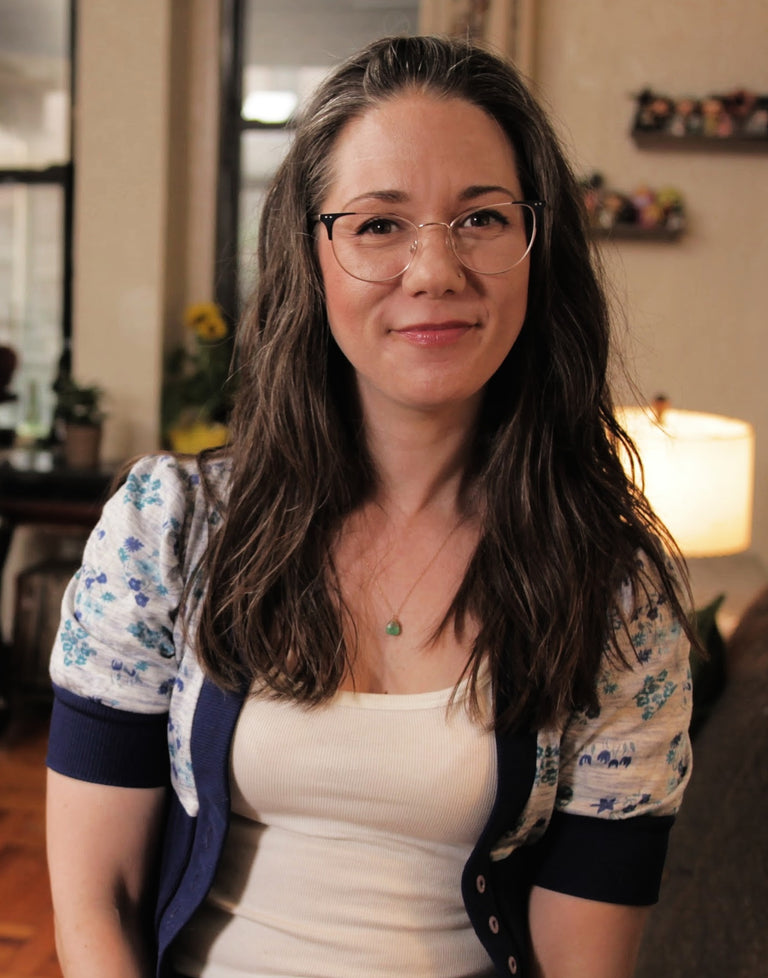If you’ve noticed increased hair shedding or are concerned you might be developing hair loss, navigating the medical system to get a diagnosis might be the last thing you want to think about.
Keep reading to get an overview of the options available to you when you’re looking to diagnose a potential hair or other medical condition, along with what to expect along the way. Plus, find out which products you should be using to help combat thinning hair.
Hair Loss Can Be Complex
When you’re trying to stop hair loss, getting to the bottom of things can be a challenging process — after all, hair loss and hair shedding can be caused by or impacted by a wide variety of factors. Hair loss or increased shedding can be connected to several issues, including:
- Aging and genetics
- Medical conditions
- Illnesses, such as Covid-19 or the flu
- Hormonal changes or hormonal imbalance
- Medication
- Diet
- Stress
- Hair treatments or styling
Because there are so many potential explanations behind and types of hair loss, if you notice unusual changes in your hair, it’s wise to see a doctor or specialist before you jump to conclusions.
“Hair loss is caused by a variety of problems,” said Dr. Dina Strachan, a board-certified dermatologist based in New York City, “[So] Before you treat hair loss, be sure to get a diagnosis.”
Some forms of hair loss can be treated, while others are less responsive to treatment, and a solution that helps one type of hair loss may exacerbate another type. As such, it’s essential to understand why your hair loss or shedding is occurring before you determine a treatment plan.
What Doctor Should I See for Hair Loss?
When it comes to seeking help for hair-related issues, it often makes sense to start with your primary care physician, or PCP — your regular doctor that you see for check-ups. Your PCP will already have a general idea of your overall health and may be able to provide helpful context in the case of hair loss.
For instance, in some cases, hair loss or shedding can be sudden, triggered by a stressful life event or some other temporary medical condition. This sudden form of hair loss, called telogen effluvium, is generally temporary and resolves on its own. Since telogen effluvium is one of the most common causes of temporary hair loss and increased shedding, most PCPs will be familiar with it and able to help determine what to do.
But your PCP is a good place to start no matter your type or cause of hair loss because they can help you take the next step forward. They may discuss your symptoms with you and order some preliminary bloodwork to explore possible causes. They can then refer you to a dermatologist, trichologist or another specialist who is equipped to treat your specific issue.
Shop: Emily Ferran & Ashley Zeal's VEGAMOUR Picks
Dermatologists vs. Trichologists
Dermatologists and trichologists are two types of specialists, and if you’re experiencing hair loss, you may get a referral to one or the other. Both can address issues with hair, but they do so with different approaches.
“Both of these specialists treat hair, but they treat it in different ways,” explained Dr. Naheed A. Ali, MD, founder of prescription marketplace USA Rx. “To find the right specialist, you should ask questions about their approach to treating hair.”
Dermatologists are doctors who specialize in diagnosing and treating a broad range of conditions that can affect skin, hair and nails. As medical doctors, they also have a wide range of diagnostic and treatment-related tools at their disposal. They can order a blood test, perform procedures and prescribe medications that can be used for treatment.
Trichologists are hair specialists with focused training on scalp and hair disorders. A medical degree is not needed to become a trichologist; as such, many trichologists are not medical doctors and cannot order tests or prescribe medications.
A trichologist may have more specific knowledge around hair than dermatologists. Additionally, some dermatologist MDs may seek additional a trichologist certification in order to specialize in hair.
So who should you see? Some people start with a trichologist for an initial screening, and if necessary, the trichologist may provide a referral to a dermatologist or other medical specialist for medical treatment. If the trichologist determines that the underlying cause of your hair concerns does not require medical treatment, they can work with you to adjust diet or lifestyle practices as needed.
Further Reading: What is a Trichologist?
How Is Hair Loss Diagnosed?
Whether you see a trichologist, dermatologist or your primary care physician, your appointment will begin with your provider gathering information. That includes discussing your own medical history and recording any family history of hair loss or other medical conditions, as well as noting any changes you’ve seen in your hair. Medical doctors may also complete a routine physical exam at this time.
Your specialist will likely ask questions and look closely at your hair, scalp and nails. They may do simple assessments (such as a hair pull test) to determine how your hair is growing or you're prone to hair breakage.
If you see a trichologist or dermatologist, they may have specialized equipment to view your hair and scalp magnified to get a better look at things. Dermatologists may order a blood test, fungal culture or perform a small scalp biopsy for laboratory testing to help make a diagnosis. These procedures are often done right then and there in the dermatologist’s office.
Shop: Best-Selling Products for Thinning Hair
What Medications Are Commonly Prescribed?
Hair loss treatment can vary depending on the underlying cause of the hair loss or shedding, from medical conditions to genetics, aging and environmental factors.
There are several medical conditions that can contribute to hair loss or changes in hair. Autoimmune diseases that cause hair loss as a symptom, such as alopecia areata, might require both treatment for the underlying disorder as well as topical treatments for the hair loss itself.
Aside from medical conditions that cause hair loss, many types of hair loss result from genetic factors, aging, environmental factors and even lifestyle. This type of hair loss is known as androgenetic alopecia or female- or male-pattern hair loss, and it is estimated to impact about 50 million men and 30 million women in the US. Male- or female-pattern hair loss is known for its characteristic pattern of loss, which manifests as a receding hairline in men and thinning sides of the hair in women.
The most common medication options for hereditary hair loss are minoxidil, finasteride and spironolactone (for female hair loss specifically).
Minoxidil
Minoxidil (commonly known by its brand name, Rogaine) is available over-the-counter as a liquid, foam or shampoo for both men and women. To use it effectively, it should be applied twice daily and be used continuously. It typically takes about six months before results are visible, and it may help people regrow hair, slow the rate of hair loss, or both.
Possible side effects of Minoxidil include scalp irritation and unwanted hair growth on the adjacent skin of the face and hands.
Finasteride
Finasteride (commonly sold as Propecia) is a prescription medication to treat pattern hair loss. Originally developed for men as a treatment for an enlarged prostate, Finasteride is taken as a pill and can help with hair regrowth and to prevent the progression of thinning hair. Finasteride is approved for male-pattern hair loss and is sometimes used “off-label” (without FDA approval) for female-pattern hair loss.
Like Minoxidil, Finasteride also takes several months before you might see its effects — and it needs to be taken indefinitely to retain its benefits. Its potential side effects include like sexual dysfunction, skin swelling and an increased risk for some cancers.
Spironolactone
Spironolactone is primarily used as a drug to treat high blood pressure, but it’s also used off-label for female-pattern hair loss. Spironolactone works by slowing the production of male hormones, or androgens, that are associated with pattern hair loss.
Like Minoxidil and Finasteride, Spironolactone has an array of potential side effects, including altered urinary function and menstrual cycles, muscle weakness and lightheadedness.
Other Common Treatments for Hair Loss
Medications can work in some cases, but they aren’t always the go-to solution for hair loss, especially permanent, long-term hair loss. Common non-medication treatments for hair loss include:
Hair Transplant Surgery
Hair transplantation is a surgical procedure in which a hair shaft from one part of the body is surgically grafted onto the part of the body experiencing hair loss to restart hair growth. This procedure is often used in instances of permanent hair loss.
“[A] surgeon can replace the hair using procedures such as hair transplantation,” explained Dr. Gaby Longsworth, PhD, trichologist with Absolutely Everything Curly. “Typically, hair follicles are moved from one area of the scalp or body to a balding spot.”
Hair transplant surgery does not require hospitalization, but it can be painful and time-intensive, as only so much hair can be grafted at a time. It often requires several procedures to achieve the desired results.
Laser Therapy
The FDA has approved low-level laser devices as treatment for hereditary hair loss in men and women. This therapy for hair is a relatively new treatment, and while some small clinical trials have shown its effectiveness, further research is needed.
“Lasers [for hair loss treatment] come in many different forms, such as hats, headbands, and combs,” Dr. Longsworth explained. “They target the hair follicles and aid in reducing inflammation and stimulating regrowth.”
While laser treatments are safe and painless, they are also time-intensive; typically, laser therapy for hair is done over the course of many months and several sessions.
Platelet-Rich Plasma Therapy
Platelet rich plasma (PRP) injections have gained popularity in recent years as a hair loss treatment option. “[PRP therapy] uses a person's own serum containing nutrient-rich components to increase hair growth,” explained Dr. Emmanuel Loucas, MD, director at SINY Dermatology and Assistant Clinical Professor of Dermatology at the Icahn School of Medicine at Mount Sinai.
“In my 10 years of performing [PRP therapy], I can say it works well for many patients,” Dr. Loucas explained, “But [it] should not be done alone.”
Dr. Loucas recommends that PRP injections should be used in conjunction with other treatments, such as laser therapy or medications.
Learn More: What You Should Know About PRP
Holistic Care for Hair Wellness
If you’re on the quest for healthy hair, whole-body health is a great place to start. Fortunately, there are plenty of ways to care for your day-to-day well-being that can benefit your follicles. Here are some tools you can add to your arsenal for holistic hair wellness.
Change Up Your Hair Care
Gentle strands need to be treated with TLC. Being gentle and avoiding excessive color or chemical treatments, tight hairstyles and regular heat styling can give your delicate hair follicles a chance to rebound. You can also consider incorporating a hair serum into your hair care routine, such as VEGAMOUR’s GRO Hair Serum, which has been shown to reduce the signs of shedding while encouraging fuller-looking hair in as little as 90 days.
Focus on Vitamins & Nutrients
A healthy, well-balanced diet will give the hair follicle everything it needs to grow healthy hair. Nutritional deficiencies, including zinc, biotin or iron deficiency, can impact your hair’s ability to grow. When needed, consider taking a daily hair vitamin supplement with biotin to fill in the gaps.
Manage Stress
Stress can impact your mental and physical health in so many ways, and the same is true for your hair follicles. Stress can not only cause temporary hair loss through telogen effluvium (TE); it can also lead to an increase in cortisol levels, which can create inflammation that impacts our follicular health.
Stress management is an essential tool for modern living and can be as simple as taking a walk in the sunshine, talking to a therapist, exercising regularly or even getting more sleep.
#include-related-slider#
The Takeaway
If you’re noticing changes in your hair, increased hair shedding or straight-up loss, know that acting early can help prevent further hair loss down the line. There are many different causes of hair loss, and there are a number of different treatment options available depending on the underlying condition.
When it comes to hair, healthcare is your friend, and losing hair can be scary, so no one should brave the process alone. So don’t be afraid to consult with a doctor or hair expert for an accurate diagnosis. When seeking out any healthcare professional, do your research to find credentialed and trusted practitioners.
Your primary care doctor, a dermatologist and a trichologist are all equipped to help you navigate the process of finding an effective treatment. And keep up with the VEGAMOUR Blog for more information, support and community on your journey.
More From VEGAMOUR
- My Hair Began Thinning in My Early 20s, So I Prioritized Self-Care
- Does Zinc Really Help With Hair Growth?
- How to Grow Your Edges Back
Photo credit: SDI Productions/iStock
Back



















